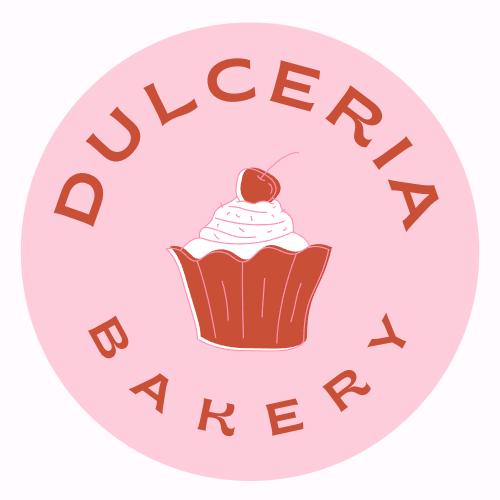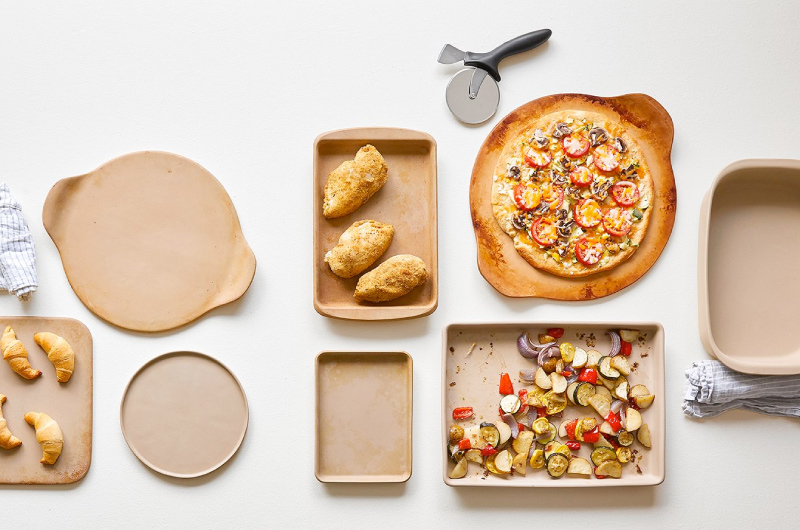Non-toxic baking sheets are baking sheets that are free from harmful chemicals such as PFOA, PTFE, lead, and cadmium. These chemicals are often found in traditional non-stick coatings on baking sheets and can potentially leach into food during cooking, posing health risks.
Non-toxic baking sheets are typically made from materials such as stainless steel, glass, or silicone, which do not contain these harmful chemicals. They are often marketed as safer and healthier options for baking and cooking.
Using non-toxic baking sheets can provide peace of mind and help to reduce exposure to harmful chemicals in the kitchen. They can also be a good choice for individuals with allergies or sensitivities to certain chemicals or materials.
What type of baking sheet is non toxic?
There are several types of baking sheets that are considered non-toxic:
- Stainless Steel Baking Sheets: These sheets are made from stainless steel, which is a durable and long-lasting material. Stainless steel baking sheets are often dishwasher safe and do not contain harmful chemicals.
- Glass Baking Sheets: Glass baking sheets are made from tempered glass, which is heat-resistant and can withstand high oven temperatures. They do not contain any harmful chemicals and are easy to clean.
- Ceramic Baking Sheets: Ceramic baking sheets are made from non-toxic materials and are often coated with a non-stick glaze. They are dishwasher safe and can withstand high oven temperatures.
- Silicone Baking Mats: These mats are made from food-grade silicone and are non-toxic, non-stick, and heat-resistant. They can be used to line baking sheets and eliminate the need for parchment paper or aluminum foil.
When purchasing non-toxic baking sheets, it’s important to look for products that are labeled as PFOA, PTFE, lead, and cadmium-free. Additionally, always follow the manufacturer’s care instructions for cleaning and maintenance to ensure that the baking sheet lasts for a long time.
Which kinds of food can you make in non toxic baking sheets?
Non-toxic baking sheets can be used to make a wide variety of foods, just like traditional baking sheets. The type of food you can make will depend on the material of the baking sheet you are using. Here are some examples:
- Stainless Steel Baking Sheets: Stainless steel baking sheets can be used to bake cookies, sheet cakes, roasted vegetables, and more.
- Glass Baking Sheets: Glass baking sheets can be used for baking cakes, casseroles, and roasting meats and vegetables.
- Ceramic Baking Sheets: Ceramic baking sheets can be used for baking bread, pastries, and pizzas.
- Silicone Baking Mats: Silicone baking mats can be used for baking cookies, pastries, and anything that requires a non-stick surface.
It’s important to note that non-toxic baking sheets may require different cooking times and temperatures compared to traditional baking sheets. Always refer to the manufacturer’s instructions and adjust cooking times and temperatures as necessary to ensure the best results.
Why should you use non toxic baking sheets?
Using non-toxic baking sheets is beneficial for several reasons:
- Healthier Cooking: Non-toxic baking sheets do not contain harmful chemicals such as PFOA, PTFE, lead, and cadmium that may leach into your food during cooking. This makes non-toxic baking sheets a safer and healthier option for cooking.
- Eco-Friendly: Non-toxic baking sheets are often made from materials that are eco-friendly and can be recycled. They are also more durable than traditional baking sheets, which means they will last longer and reduce waste.
- Easy to Clean: Non-toxic baking sheets are often easier to clean than traditional baking sheets. They do not require harsh chemicals or abrasive scrubbers to remove food residue, which can extend the life of the baking sheet.
- Versatile: Non-toxic baking sheets come in a variety of materials, sizes, and shapes. This makes them versatile for a wide range of baking and cooking needs.
Overall, using non-toxic baking sheets is a safe and eco-friendly choice that can improve the quality of your cooking and reduce your exposure to harmful chemicals.
How to use non toxic baking sheets
Using non-toxic baking sheets is similar to using traditional baking sheets. Here are some general tips for using non-toxic baking sheets:
- Preheat the Oven: Preheat the oven to the recommended temperature before using the baking sheet.
- Grease or Line the Baking Sheet: Depending on the recipe, you may need to grease the baking sheet with cooking spray, butter, or oil. Alternatively, you can line the baking sheet with parchment paper or a silicone baking mat.
- Arrange Food on the Baking Sheet: Arrange the food on the baking sheet, leaving enough space between each item to ensure even cooking.
- Monitor Cooking Time and Temperature: Keep an eye on the food as it cooks, and adjust the cooking time and temperature as necessary to ensure the best results.
- Remove from Oven and Let Cool: Once the food is cooked, remove the baking sheet from the oven and let it cool before handling.
- Clean the Baking Sheet: Clean the baking sheet using mild soap and warm water. Avoid using harsh chemicals or abrasive scrubbers that can damage the non-toxic surface.
It’s important to refer to the manufacturer’s instructions for the specific care and maintenance of your non-toxic baking sheet. Different materials may have different care requirements, so following the manufacturer’s guidelines will help ensure that the baking sheet lasts for a long time.
How to clean non toxic baking sheets
Cleaning non-toxic baking sheets is generally easier than cleaning traditional baking sheets, as they do not require harsh chemicals or abrasive scrubbers. Here are some tips for cleaning non-toxic baking sheets:
- Use Mild Soap and Warm Water: Fill a sink or large bowl with warm water and add a small amount of mild dish soap. Place the baking sheet in the soapy water and let it soak for a few minutes.
- Scrub Gently: After soaking, use a soft-bristled brush or sponge to scrub the baking sheet gently. Avoid using abrasive scrubbers or steel wool, as they can scratch the surface of the baking sheet.
- Rinse Thoroughly: Rinse the baking sheet with clean water to remove any soap residue.
- Dry Completely: Dry the baking sheet with a clean towel or allow it to air dry completely before storing.
- Avoid Dishwashers: Some non-toxic baking sheets may not be dishwasher safe, so it’s important to check the manufacturer’s instructions. Dishwashers can damage the non-toxic coating or cause it to wear off more quickly.
Overall, cleaning non-toxic baking sheets is easy and straightforward. By following these simple tips, you can help prolong the life of your baking sheets and ensure that they remain safe and effective for years to come.
How long does it take to make use non toxic baking sheets?
Using non-toxic baking sheets doesn’t take any longer than using traditional baking sheets. The time it takes to use a non-toxic baking sheet will depend on the recipe you’re making, the size of the baking sheet, and the temperature of the oven.
However, it’s important to note that non-toxic baking sheets may require some additional care and maintenance to ensure they remain in good condition over time. For example, you may need to avoid using metal utensils or abrasive scrubbers that can damage the non-toxic coating, and you may need to avoid high heat settings that can cause the coating to wear off more quickly. Additionally, some non-toxic baking sheets may require special cleaning procedures or storage methods to keep them in good condition.
Overall, using non-toxic baking sheets is a safe and effective way to cook a variety of different foods, and it doesn’t take any longer than using traditional baking sheets. Just be sure to follow the manufacturer’s instructions for care and maintenance to ensure the best results.
Tips for using non toxic baking sheets
Here are some tips for making delicious egg waffles in a waffle maker:
- Preheat the waffle maker: Make sure to preheat your waffle maker for a few minutes before adding the batter. This will help ensure that the waffles cook evenly and have a crispy exterior.
- Use a non-stick cooking spray: Spray the waffle maker with a non-stick cooking spray to prevent the egg waffles from sticking to the surface. This will make it easier to remove the waffles from the maker without breaking them.
- Don’t overfill the waffle maker: Be careful not to overfill the waffle maker with batter, as this can cause the waffles to overflow and make a mess. Fill each waffle mold with enough batter to cover about 2/3 to 3/4 of the surface.
- Experiment with toppings: Egg waffles are a great base for a variety of toppings, so feel free to get creative! Try adding fresh fruit, whipped cream, chocolate chips, or other toppings of your choice.
- Cook until golden brown: Cook the egg waffles until they are golden brown and crispy on the outside. This will ensure that the waffles are cooked through and have a nice texture.
- Serve immediately: Serve the egg waffles immediately after removing them from the waffle maker, while they are still warm and crispy. This will give you the best texture and flavor.
By following these tips, you can make delicious egg waffles in your waffle maker that are crispy on the outside, fluffy on the inside, and perfect for any time of day.
Related Posts
What is a foil lined baking sheet?
Disclaimer: There are affiliate links in this post. At no...
Read MoreHow To Clean A Baking Sheet Properly
Disclaimer: There are affiliate links in this post. At no...
Read MoreEverything You Need To Know About Silicone Baking Sheet
Disclaimer: There are affiliate links in this post. At no...
Read MoreAluminum Vs Stainless Steel Baking Sheet – Which Is Right For You?
Disclaimer: There are affiliate links in this post. At no...
Read MoreWhy Trust Us
You will find what you are looking for at dulceriabakery. From classic to luxury brands, you'll find both. We will help you to select appliances that fit your needs, budget and lifestyle. Whether you want to stop by to learn more — or plan to make a major purchase — we’ll treat you like family and assist you every step of the way. Shop with us today to receive friendly and experienced help along the way.




